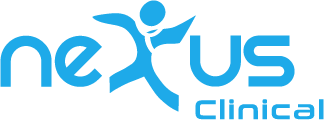
The pricing and cost of EMR / EHR for private practice varies from a couple of hundred to a few thousand dollars per provider per month. The average cost may not apply to you since every practice has its requirements. Your final cost is dependent on your requirements and the vendor you select.
EMR cost increases with the number of providers and features. Physician providers are charged more than RNs and therapists. The more features you need, the costlier an EMR gets. Plus, a popular EMR can charge a premium over generic prices.
If you do not manage your EMR cost, you can end up paying more than required. So how do you decide what an EMR is worth paying? Let’s look at how to go about EMR cost and budget:
How to Budget for EMR/EHR
Start as Small as Possible
A popular way to budget for an EMR seems to be estimating Return on Investments (ROI). However estimating ROI can be difficult unless you are a financial expert. So another way is to minimize the spending, check for benefits over time, and adjust your budget accordingly.
You think of EMR as a painkiller. And you don’t need a painkiller that does 50 other things. Limiting your budget to EMRs with features that are indispensable to your private practice can ensure good returns.
Account for Benefits
Budgeting should account for benefits and not just costs. That’s because looking at only the cost per provider gives you a limited idea. A more technical way is to factor in the average patient fees, time saved, and cost as a percent of annual revenue. Then explore how different features can help you gain maximum benefits.
For example, if an EMR offers encounter templates that save time in documenting; and make it easy to process claims, it could be worth paying more. Similarly, you can look at other practice-wide benefits of an EMR that can justify its price tag. So the focus is on process optimization along with expense optimization. In essence, this approach is analogous to zero-based budgeting used by many Fortune 500 companies today.
Such cost-benefit analysis can also help you in identifying whether a low-cost EMR delivers more bang for your buck compared to a premium EMR.
A Case for Lots of Features
What if you need many features without blowing out your budget? In that case, you can look for a unified EHR system that offers several additional features like billing, scheduling, claim management, and patient portal (check the sample list below). Purchasing a unified system can be economical and more efficient than using disparate software for each process.
Clarify Costs with Vendors
Most EMRs don’t reveal pricing on their websites. Getting a quote from many vendors can slow down your selection. Even when you get quotes from the vendors, chances are that some of them have hidden or switching costs. Unfortunately, you have to ask every EMR vendor about additional charges.
Let’s look at hidden and switching costs briefly:
Hidden EMR Costs & Pricing
The EMR pricing and the final bill could be different due to hidden costs. Hidden costs are generally charges for additional services like data migration, staff training, software add-ons, and support that are not part of the subscription or licensing price.
Hidden costs can be a one-time fee or recurring charges. And are important to consider because they can come at a significant price. For example, the data migration task, depending on its size and complexity, can cost hundreds if not thousands of dollars.
While hidden costs may come as a surprise, not all of them are unjustified. However, there are true hidden costs due to issues like software malfunction, slow performance, and security gaps. Such issues are usual in software development. You can approach the vendor for resolutions if they haven’t identified the issue already.
Switching EMR Costs
Switching between EMRs is costlier than starting afresh. Apart from the time cost of switching, other things like data transfers and training costs can increase expenses. So it’s important to get a reliable EMR that works for you.
One way to make sure the EMR is a good fit for you is by taking a free trial. Though it would take a few weeks or months to compare EMRs, it’s an essential exercise when choosing software.
Practices must be careful of vendor lock-ins. EMR vendors can raise the switching cost so high that the practice is essentially stuck with the vendor due to financial pressure. Vendors may also exploit lock-ins by raising costs over time. Good evaluation and keeping backup of data are some precautions that you can take against any potential lock-ins.
Due to a need for constant software updates with changing technology and processes, the type of EMR you choose—web-based or self-hosted—can be costly if you switch in the future. While web-based EMRs are updated in real-time, self-hosted EMRs can take months if not years to receive the same updates. So web-based EMRs are better to reduce the probability of switching. Web-based EMRs also tend to have lower switching costs than self-hosted ones.
Summary
Estimating private practice EMR costs is not straightforward. However, planning your budget in line with your critical requirements can help you avoid unnecessary costs.







